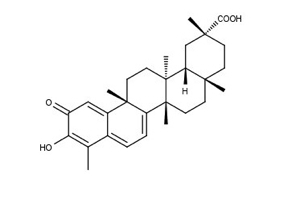The treatment of diseases by inducing, enhancing, or surpressing an immune response is referred to as Immunotherapy. T-cell activation and inactivation requires the coordination of various co-inhibitory and co-stimulatory signals and most immunotherapies modulate these signals.
Therapeutic manipulation of immunopathways has lead to promising clinical results for the treatment of a number of diseases such as cancer, autoimmune diseases and inflammatory diseases. Research in this field is rapidly evolving as scientists seek to identify the next generation of therapies.
Over the past 12 months I have introduced a number of pathways and proteins involved, which represent potential targets for drug discovery campaigns and I’ve presented assays to measure inhibitor effects on these pathways (B7-1 / CD28 and B7-1 / CTLA4; PD-1/PD-L1/PD-L2; BLTA:HVEM, CD47:SIRPα; GITR:GITRL; CD40:CD40L; CD137:CD137L; IDO).
Ox40:Ox40L pathway

Today I’ll be concentrating on OX40 (CD134) which is a co-stimulatory receptor not constitutively expressed on resting naïve T cells. It serves as a secondary co-stimulatory immune checkpoint molecule. OX40L, the ligand binding to OX40 is not expressed on resting antigen presenting cells as well, but is following their activation. Binding of OX40 to its ligand, OX40L (CD252), present on dendritic cells, modulates T cell activation and T cell effector function (Fig.1). Studies have shown that OX40 agonists can increase anti-tumor immunity and improve tumor-free survival in pre-clinical studies. Alternatively, OX40 antagonists offer potential as therapeutics for inflammatory diseases (for a review see 1). Recently, phase I studies have been conducted with an OX40 agonist (monoclonal anti Ox40 antibody) in patients with solid tumors with promising results (2).
OX40 : OX40L Screening tools
![Fig. 2: Inhibition of OX40 [Biotinylated]: OX40L binding measured using the OX40 [Biotinylated]:OX40L Inhibitor Screening Assay Kit (cat. nr 14972045).](http://5.196.212.231/wp-content/uploads/2015/09/OX40-kit-results-graph-300x237.jpg)
If you would like more information about the OX4o:OX40L product line or any other Immunotherapy related kits and proteins, get in touch by leaving your questions or comments below.
Sources:
- Linch S. N. et al., OX40 agonists and combination immunotherapy: putting the pedal to the metal, Frontiers in Oncology 5 (2015)
- Curti B. D. et al., OX40 is a potent immune stimulating target in late stage cancer patients, Cancer Res. 73 (24): 7189–7198 (2013)



